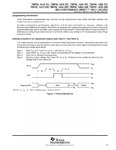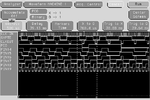apprenticemart2
Member level 1
Hi all,
I'm trying to reverse engineer a protected PAL16R8 and am getting a little stuck and am hoping to narrow down where to focus my efforts with some help from you guys because I'm a total noob.
I'm hoping someone could peruse the text file attached and spot some patterns that I can't. The decimal 128 as an input gives an interesting output for instance.
I can fire some numbers into it and read the output. As yet I don't know exactly how this device is configured. I input a number and then maintain that on the inputs and give the device 32 clocks and read the output each time. It seems to loop around after more than 32. Some numbers loop around with less than 32 clocks.
The first bit on an input is to pin 2..9
The output is read first from pin 19..12
If the text file would be better in hex I can modify it.
In circuit the device receives a sequence of numbers and every now and then it gets an output enable signal and a value appears on the outputs which is obviously being compared to something. At the moment I am testing the device out of circuit and trying to duplicate what I see with my logic analyser. I will need to put this in a text file and am working on this now.
Any suggestions will be appreciated
Thanks
I'm trying to reverse engineer a protected PAL16R8 and am getting a little stuck and am hoping to narrow down where to focus my efforts with some help from you guys because I'm a total noob.
I'm hoping someone could peruse the text file attached and spot some patterns that I can't. The decimal 128 as an input gives an interesting output for instance.
I can fire some numbers into it and read the output. As yet I don't know exactly how this device is configured. I input a number and then maintain that on the inputs and give the device 32 clocks and read the output each time. It seems to loop around after more than 32. Some numbers loop around with less than 32 clocks.
The first bit on an input is to pin 2..9
The output is read first from pin 19..12
If the text file would be better in hex I can modify it.
In circuit the device receives a sequence of numbers and every now and then it gets an output enable signal and a value appears on the outputs which is obviously being compared to something. At the moment I am testing the device out of circuit and trying to duplicate what I see with my logic analyser. I will need to put this in a text file and am working on this now.
Any suggestions will be appreciated
Thanks

